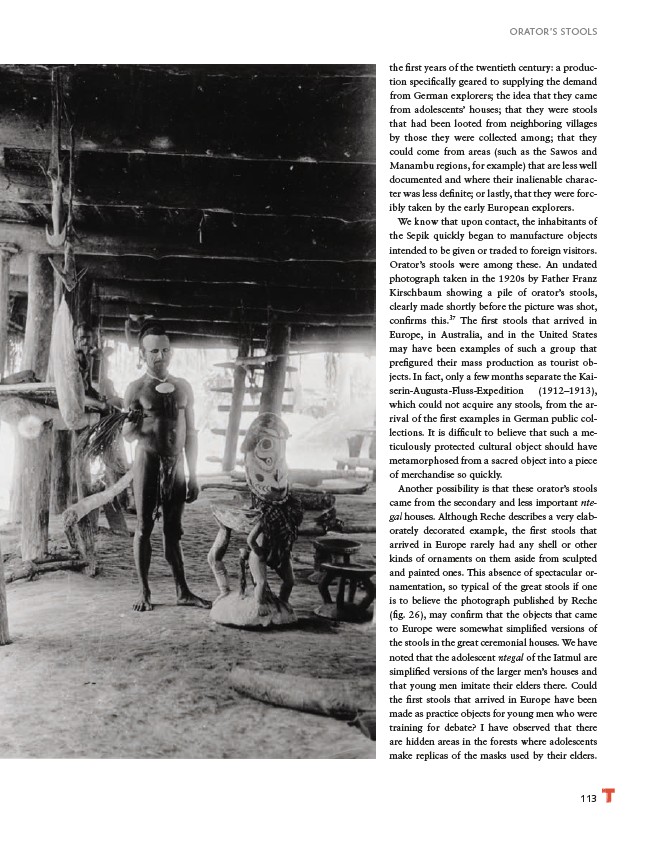
ORATOR’S STOOLS
the first years of the twentieth century: a production
specifically geared to supplying the demand
from German explorers; the idea that they came
from adolescents’ houses; that they were stools
that had been looted from neighboring villages
by those they were collected among; that they
could come from areas (such as the Sawos and
Manambu regions, for example) that are less well
documented and where their inalienable character
was less definite; or lastly, that they were forcibly
taken by the early European explorers.
We know that upon contact, the inhabitants of
the Sepik quickly began to manufacture objects
intended to be given or traded to foreign visitors.
Orator’s stools were among these. An undated
photograph taken in the 1920s by Father Franz
Kirschbaum showing a pile of orator’s stools,
clearly made shortly before the picture was shot,
confirms this.37 The first stools that arrived in
Europe, in Australia, and in the United States
may have been examples of such a group that
prefigured their mass production as tourist objects.
In fact, only a few months separate the Kaiserin
Augusta-Fluss-Expedition (1912–1913),
which could not acquire any stools, from the arrival
of the first examples in German public collections.
It is difficult to believe that such a meticulously
protected cultural object should have
metamorphosed from a sacred object into a piece
of merchandise so quickly.
Another possibility is that these orator’s stools
came from the secondary and less important ntegal
houses. Although Reche describes a very elaborately
decorated example, the first stools that
arrived in Europe rarely had any shell or other
kinds of ornaments on them aside from sculpted
and painted ones. This absence of spectacular ornamentation,
so typical of the great stools if one
is to believe the photograph published by Reche
(fig. 26), may confirm that the objects that came
to Europe were somewhat simplified versions of
the stools in the great ceremonial houses. We have
noted that the adolescent ntegal of the Iatmul are
simplified versions of the larger men’s houses and
that young men imitate their elders there. Could
the first stools that arrived in Europe have been
made as practice objects for young men who were
training for debate? I have observed that there
are hidden areas in the forests where adolescents
make replicas of the masks used by their elders.
113